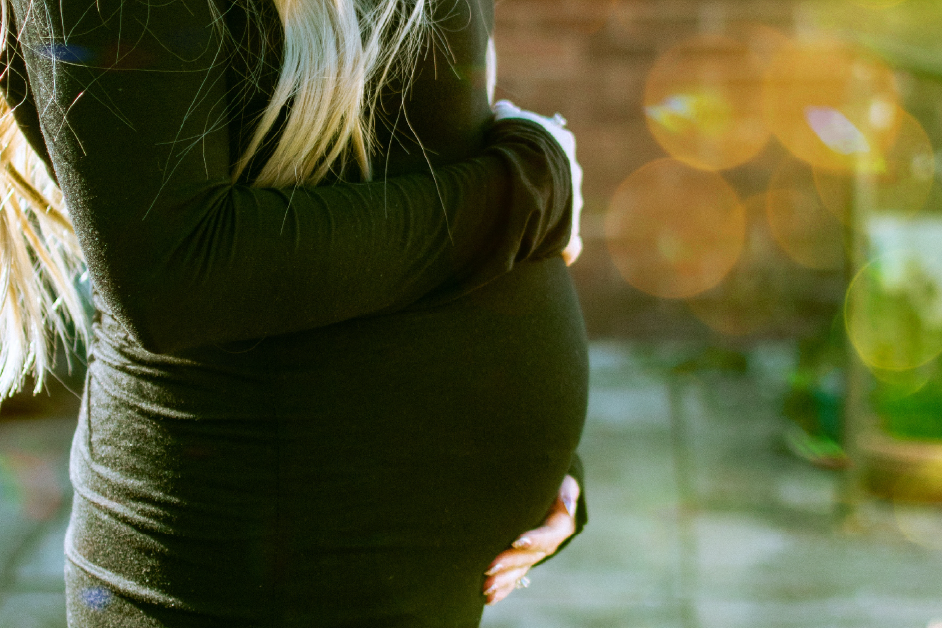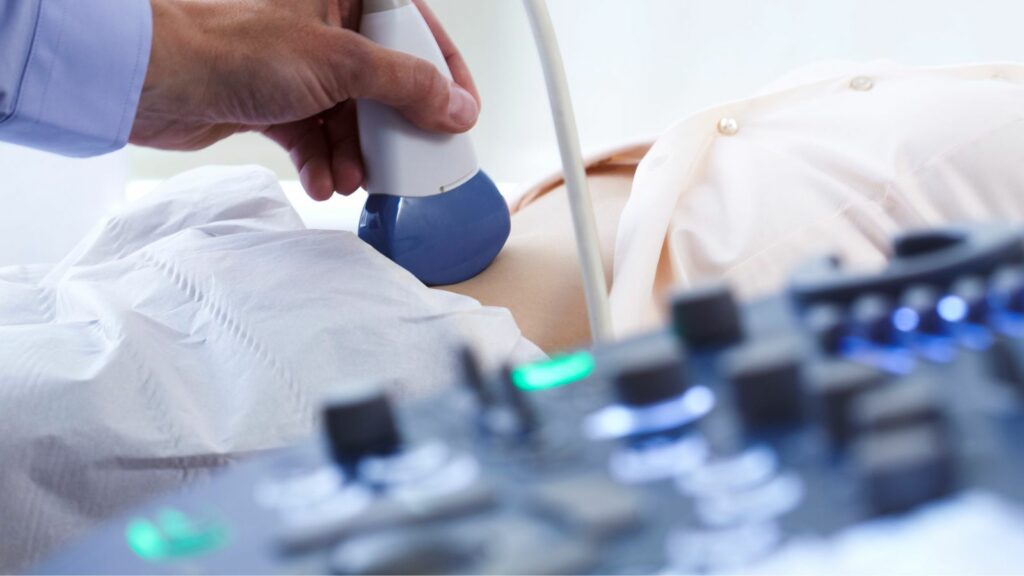Are high dosed food supplements safe and necessary to use for pregnant women post-bariatric surgery?
Women request bariatric surgery more often than men – with the majority being of child bearing age1, 2, 3. It is known that weight loss surgery (WLS) comes with risks, including micronutrient deficits, most commonly iron, calcium, fat soluble vitamins (A, D, E and K), folic acid, vitamin B12 and B15, 6. Since the majority of bariatric patients already have at least one vitamin or mineral deficiency preoperatively,7 it is not surprising that a high dosed food supplements are to be advised. The safety of supplementation during pregnancy for post-bariatric women, however, is often questioned.
In many countries, the care of pregnant women post bariatric surgery follows general guidelines, which include supplementation and close monitoring to ensure foetal growth and wellbeing8. Despite these guidelines, studies suggest that deficiencies post-WLS have actually increased9-11. For WLS-women who become pregnant, the risks are even greater.
During pregnancy, the micronutrient demand is increased, resulting in insufficient dietary intake to meet demands12. Under normal circumstances (non-WLS), absorption of some nutrients is increased to compensate these higher needs. For instance, this is the case for calcium and iron13, 14. In WLS patients, however, the ability to increase absorption is hindered15, which further underscores the need of high-dosed supplementation. However, too high levels of certain nutrients, like vitamin A, may have a negative effect on foetal growth and health.
The question arising is, to what level can the safety of high-dosed supplementation be ensured during pregnancy, for women post-WLS, to reduce deficiency risk?
Vitamin A supplementation during pregnancy
Vitamin A is a fat-soluble vitamin, is required for growth and development, for eye health, and for the immune system of mother and foetus2. Vitamin A deficiency may lead to blindness, and in young children to growth retardation. Having a low status during vulnerable periods, such as pregnancy, greatly increases the risk of developing health related problems17. However, toxic levels of vitamin A have health risks as well. So, how to ensure safety in vitamin A supplementation during pregnancy?
Several bariatric procedures hinder the digestion and absorption of fat-soluble vitamins, like vitamin A. Oxidative stress, maldigestion and malabsorption post-surgery, as well as dietary restrictions and liver failure, all contribute to the development of vitamin A deficiencies before and after RYGB2. Pereira et al. found that up to 53% of obese adults were vitamin A deficient 180 days post RYGB, despite daily supplementation of 5.000 IU (1.500 mg/1.500 μg) retinol palmitate19. De Vlieger et al. assessed 49 post bariatric pregnant women. 58% were found to be vitamin A deficient at delivery, despite supplementation with 3 mg vitamin A in 73% of the women20. Cruz et al. found, that, while requirements increase, serum concentrations of retinol tended to decrease during trimesters. Shockingly, 90% of the women were found deficient, despite supplementation of 5.000 IU/day (1.500 μg/day) vitamin A21.
Pregnancy post-WLS clearly increases the risk of vitamin A deficiency. Supplementation of between 1.500 – 3.000 μg/day is to be considered safe during pregnancy for women post RYGB and BPD20, 21; and monitored for safety, especially in advanced pregnancy. This remains below the European Food Safety Association’s (EFSA) (2015) upper level (UL) of 3.000 μg RE/day for women of childbearing age and for pregnancy and lactation, which is based on the risk of hepatotoxicity and teratogenicity23.
Vitamin D supplementation levels
Vitamin D deficiency during pregnancy is associated with lower maternal weight gain, preeclampsia, gestational diabetes, caesarean delivery, reduced bone mineralization in the foetus, and increases risk of the development of type 1 diabetes, asthma, rhinitis and schizophrenia in childhood3. Reduced vitamin D levels are frequently observed in obese individuals, with a prevalence of around 84% in preoperative bariatric patients, and a presence of in 47% of post-bariatric pregnancies3. Vitamin D supplementation is essential during pregnancy to ensure safety, health and development of mother and child.
Post RYGB patients that received 50.000 IU of vitamin D per week (178 μg/day) in addition to the standard supplement of 800 IU (20 μg/day) dose per day, showed a reduction in vitamin D depletion up to 6 months after surgery25. Another study advised a safety supplementation dose (not specified for pregnancy) of minimal 2.000 IU/day (125 μg/day) post RYGB26. The ASMBS recommends 75 μg/day vitamin D for bariatric patients in general15. Depending on the surgical procedure doses will vary, but for RYGB, doses of up to 125 μg/day are advised26. For BPD, the recommended dose is increased to 178 μg/day4. EFSA suggests a maximum level of 100 μg/day for all healthy adults (including pregnant and lactating women)27, 33, but they did not take post-WLS women into account.
Folic acid and vitamin B12
Folic acid and vitamin B12 absorption are reduced after bariatric surgery. Therefore, supplementation is needed for all post-bariatric patients and is especially important for the safety of mother and child during pregnancy. Folic acid is normally recommended in higher doses for the first trimester for all women (400 μg/day), since deficiencies increase the risk of neural tube defects. Vitamin B12 deficiencies during pregnancy can cause neuropathy29 and developmental delay in the neonate30. De Vlieger et al. found the prevalence of vitamin B12 deficiency to be 48% in pregnant women post-bariatric surgery20, whereas in another study, vitamin B12 and folate deficiencies were found in 53% and 16% of the cases respectively30.
The exact requirements of B12 and folate differ per operation type. For BPD and RYGB, at least 350 μg/day is recommended for B12 (non-pregnant)4, 32, and 600 μg/day of folic acid appears the recude deficiency risk post RYGB32. The ASMBS suggests between 350 – 500 μg/day for B12 and 800 – 1.000 μg/day folic acid15.
The safety of iron supplementation during pregnancy
Deficiency of a critical nutrient such as iron can lead to impaired cognitive function, due to its decisive role in brain development35. A recent study found that maternal iron deficiency in late pregnancy had an indirect impact on neurotrophic factors in the foetal hippocampus, which plays an important role in the development of learning, memory and behaviour36.
A lowered iron absorption, together with a decreased intake of iron-rich products, impact the iron status of postoperative bariatric patients15,32,38. In women after RYGB, the risks of maternal anemia and having a small for gestational age (SGA) baby, were increased. This has been linked to the malabsorption of nutrients such as iron39. Alwan et al. reported that anaemia in the first half of pregnancy triples the risk of having an SGA baby40.
The iron dose needed during pregnancy post-WLS is not well understood. An early study suggested iron requirements to be close to 1040 mg during pregnancy42, in healthy women. The World Health Organisation and the Food and Agricultural organisation (WHO/FAO) have proposed 840 mg, assuming sufficient iron storages (i.e. 500 mg available during the last two trimesters)43. However, among post-WLS women, iron storages are often depleted, knowing that many WLS patients had deficits even prior to surgery4. The ASMBS suggest between 45-60 mg iron per day post RYGB, BPD/DS and SG – for men and women1. However, Dogan et al. suggested that at least 100 mg/ day is needed to maintain iron status in females post RYGB32. Furthermore, the Obesity Management Task Force (2017) recommended doses of up to 200 mg/day6, particularly when deficits exist. A sensible approach would be to monitor status and adjust the dose according to needs. The last trimester is especially important, since iron status can be reduced and higher doses may be needed.
Conclusion
In pregnant women post WLS, vitamin and mineral dosages are both safe and necessary to ensure a healthy pregnancy. In fact, data suggest that these women are particularly at risk of nutritional deficiencies, leading to maternal anaemia, neural tube defects, microphthalmia, Wernicke’s encephalopathy and foetal cerebral haemorrhage1,6. Adequate nutritional assessment and supplementation, as well as monitoring of nutritional markers during pregnancy, are therefore essential to prevent adverse pregnancy outcomes1,6. Finally, the ASMBS recommends preoperative screening to optimize postoperative outcomes and nutritional status15.
Related articles:
References:
1. Gimenes JC, Ferreira Nicoletti C, Augusta de Souza M et al. Pregnancy after Roux-en-Y gastric bypass: Nutritional and Biochemical aspects. Obesity Surgery 2017;27: 1815 – 1821 2. Chagas CB, Saunders C, Pereira S et al. Vitamin A Deficiency in Pregnancy: Perspectives after Bariatric Surgery. Obesity Surgery 2013; 23: 249 – 254
3. Medeiros M, Saunders C, Chagas CB et al. Vitamin D deficiency in pregnancy after bariatric surgery. Obesity Surgery 2013;23: 1679-1684
4. Homan J, Schijns W, Edo O et al. Treatment of Vitamin and Mineral Deficiencies After Biliopancreatic Diversion With or Without Duodenal Switch: a Major Challenge. Obesity Surgery 2018; 28:234–241
5. Yau P, Parikh M, Saunders JK et al. Pregnancy after bariatric surgery: the effect of time-to-conception on pregnancy outcomes. Surgery for Obesity and related diseases 2017; (13) 1899 – 1907
6. Busetto L, Dicker D, Azran C et al. Practical recommendations of the Obesity Management Task Force of the European Association for the Study of obesity for the post Bariatric Surgery Medical Management. Obesity Facts 2017;(10): 597 – 632
7. Gehrer S, Kern B, Peters T et al. Fewer nutrient deficiencies after laparoscopic sleeve gastrectomy(LSG)than after laparoscopic Roux-Y-gastric bypass(LRYGB):a prospective study. Obesity Surgery 2010; 20(4):447–53.
8. Renault K, Andersen LLT, Damm P et al. Gravide som er bariatrisk opererede. Sandbjerg 2017 [Pregnant women who have had bariatric surgery}. Dansk Selskab for Obstetrik og Gynækologi. 2017.
9. Gudzune KA, Huizinga MM,Chang HY et al. Screening and diagnosis of micronutrient deficiencies before and after bariatric surgery. Obesity Surgery 2013;23(10):1581–9.
10. Peterson LA, Cheskin LJ, Furtado M, et al. Malnutrition in bariatric surgery candidates: multiple micronutrient deficiencies prior to surgery. Obesity Surgery 2016;26(4):833–8.
11. Lee. C. Bariatric surgery https://www.hopkinsguides.com/hopkins/view/Johns_Hopkins_Diabetes_Guide/547015/all/Bariatric_Surgery
12. Wheeler S. Symposium on ‘Translation of research in nutrition II: the bed’ Assessment and interpretation of micronutrient status during pregnancy. Proceedings of the Nutrition Society 2008; 67, 437–450
13. European Food Safety (EFSA). Scientific Opinion on Dietary Reference Values for iron. EFSA Panel on Dietetic Products, Nutrition and Allergies (NDA). EFSA Journal 2015;13(10):4254
14. Bothwell TH. Iron requirements in pregnancy and strategies to meet them. Am J Clin Nutr. 2000;72(1 Suppl):257S-264S. Review.
15. Parrott J, Frank L, Rabena R et al American Society for Metabolic and Bariatric Surgery Integrated Health Nutritional Guidelines for the Surgical Weight Loss Patient 2016 Update: Micronutrients. Surgery for Obesity and Related Diseases 2017; 00–00
16. Biesalski HK. Bioavailability of vitamin A. EJCN 1997. Suppl. 1, S71-75
17. World Health Organization (WHO) – Global prevalence of Vitamin A deficiency in populations at risk from 1995-2005. WHO global database. 2016
18. Winkler FK, D’Arcy A, Hunziker W. “Structure of human pancreatic lipase”. Nature 1990. 343 (6260): 771–774.
19. Pereira S, Saboya C, Chaves G et al. Class III obesity and its relationship with the nutritional status of vitamin A in pre and post-operative gastric bypass. Obesity Surgery 2009; 19: 738 – 744
20. De vlieger R, Guelinckx I, Jans G et al. Micronutrient levels and supplement intake in pregnancy after bariatric surgery: A prospective cohort study. PLOS ONE 2014; 9 (12)
21. Cruz S, Matos A, Pereira da Cruz S et al. Relationship between the Nutritional Status of Vitamin A per Trimester of Pregnancy with Maternal Anthropometry and Anemia after Roux-en-Y Gastric Bypass. Nutrients 2017, 9, 989.
22. IVAGG (International Vitamin A Consultative Group). IVACG Statement. Safe Doses of Vitamin A during Pregnancy & Lactation. 1998
23. European Food Safety Association (EFSA) -(Panel on Dietetic Products, Nutrition and Allergies). Scientific Opinion on the dietary reference values for vitamin A. EFSA Journal 2015;13(3):4028
24. Van den Berg, H. Bioavailability of vitamin D. EJCN 1997. Suppl. 1, S76-79
25. Carlin A, Rao D, Yager K et al. Treatment of vitamin D depletion after Roux-en-Y gastric bypass: a randomized prospective clinical trial. Surgery for Obesity and Related Diseases 2009; 5(4): 444-449
26. Goldner WS, Stoner JA, Lyden E, et al. Finding the optimal dose of vitamin D following Roux-en-Y gastric bypass: a prospective, randomized pilot clinical trial. Obesity Surgery 2009;19:173–179.
27. European Food Safety Association (EFSA) (EFSA Panel on Dietetic Products, Nutrition and Allergies), 2012. Scientific Opinion on the Tolerable Upper Intake Level of vitamin D. EFSA Journal 2012;10(7):2813, 45 pp.
28. Chanarin I. The Megaloblastic Anaemias, 2nd Ed. Blackwell Scientific Publications. Oxford.
29. Scott JM. Bioavailability of B12. EJCN 1997. Suppl. 1, S49-53
30. Jans G, Matthys C, Bogaerts A et al. Adverse neonatal outcomes after bariatric surgery: A systematic review. Advances in nutrition 2015 (6): 420 – 429
31. Haddow JE, Hill LE, Kloza EM et al. Neural tube defects after gastric bypass. Lancet 1986;1 (8493):1330
32. Dogan K, Aarts EO, Koehestanie P et al. Optimization of Vitamin Suppletion After Roux-En-Y Gastric Bypass Surgery Can Lower Postoperative Deficiencies. A Randomized Controlled Trial. Medicine 2014. Volume 93, Number 25.
33. European Food Safety Association (EFSA) (Panel on Dietetic Products, Nutrition and Allergies). Scientific Opinion – summary table of Tolerable Upper Intake Levels – version 3 – 2017 http://www.efsa.europa.eu/sites/default/files/assets/UL_Summary_tables.pdf
34. Atamna H, Walter PB, Ames BN. The role of heme and iron-sulfur clusters in mitochondrial biogenesis, maintenance, and decay with age. Arch Biochem Biophys 2002;397:345– 53.
35. Perignon M, Fiorentino M, Kuong K, et al. Stunting, Poor Iron Status and Parasite Infection Are Significant Risk Factors for Lower Cognitive Performance in Cambodian School- Aged Children. PLOS ONE November 2014 | Volume 9 | Issue 11
36. Yusrawati, Rina G, Indrawati LN et al. Differences in brain-derived neurotrophic factor between neonates born to mothers with normal and low ferritin. Asia Pac J Clin Nutr. 2018;27(2):389-392.
37 . Falkingham M, Abdelhamid A, Curtis P et al. The effects of oral iron supplementation on cognition in older children and adults: a systematic review and meta-analysis. Nutrition Journal 2010; 9:4: 2-14
38. Charlton RW & Bothwell TH. Iron absorption. Ann Rev Med 1983; 34:55-68
39. Hammeken LH, Betsagoo R ,Jensen AN et al. Nutrient deficiency and obstetrical outcome in pregnant women following Roux-en-Y gastric bypass: A retrospective Danish cohort study with a matched comparison group. European Journal of Obstetric & Gynecology and Reproductive Biology 2017; (216) 56-60
40. Alwan NA, Cade JE, McArdle HJ, et al. Maternal iron status in early pregnancy and birth outcomes: insights from the Baby’s Vascular health and Iron in Pregnancy study. Br J Nutr 2015;113(June (121)):1985–92.
41. Kotkiewics A, Donaldson K, Dye C, et al. Anemia and the need for intravenous Iron infusion after Roux-en-Y gastric bypass. Clin Med insights Blood Disord 2015;8
42. Hallberg L. Iron balance in pregnancy. In: Vitamins and minerals in pregnancy and lactation. 2431 Nestlé Nutrition Workshop Series, n°16. Ed Berger H. 1988 Raven Press, New York, USA, 115-127.
43. World Health Organization (WHO) and Food and Agricultural Organization (FAO) of the United Nations. Vitamin and mineral requirements in Human Nutrition. 2nd Ed. 2004




